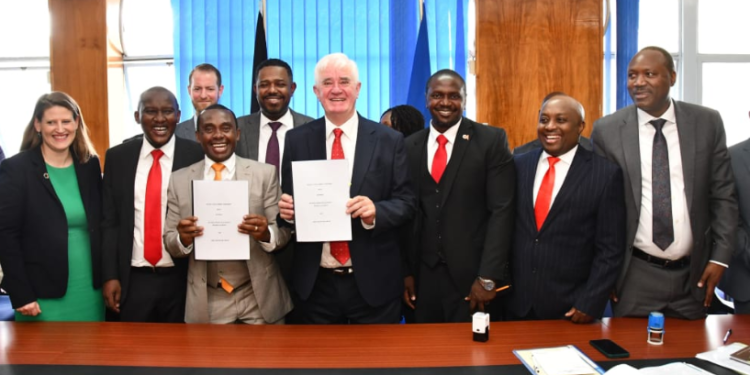A historic milestone was reached Thursday for Kenya’s energy and infrastructure goals, as GBM Engineering Consortium, a UK-based firm, signed an agreement with the Kenyan government to construct the High Grand Falls Dam. This landmark Project Development Agreement represents major progress in addressing Kenya’s increasing energy demands and water resource management needs.
The proposed High Grand Falls Dam on the Tana River in Kitui County will have an enormous capacity of 693 megawatts. The mega-project has faced a lengthy development process since its conception in 2009, with procurement and legal obstacles causing delays. The newly inked deal clears the path for GBM Engineering Consortium to advance the dam, after winning the competitive tender to finance, design, build, operate and eventually transfer the project.
Read more: Why digital disruption is displacing traditional bank tellers
The High Grand Falls Dam is a major component of the ambitious Lamu Port and Lamu-Southern Sudan-Ethiopia Transport Corridor project (LAPSSET) to boost regional trade and integration. The dam’s massive reservoir will cover 165 square kilometers and hold 5.6 billion cubic meters of water, ranking it second in size only to Egypt’s iconic Aswan High Dam.
This will enable irrigation for over 250,000 hectares of farmland, along with water supply for domestic and industrial use. Flood mitigation for coastal counties is another expected benefit.
Most significantly, the dam’s power station will be developed in two phases, harnessing the mighty Tana River to generate a total of 693 MW of renewable hydroelectric energy. This will make it Kenya’s most powerful hydro facility, surpassing the existing Seven Forks Scheme’s capacity of 540 MW. The green power will support Kenya’s goals to increase clean energy in its mix.
Read more: Ruto woos Silicon Valley to invest in Kenya’s digital future
Concerns over funding arrangements were raised after the Arror and Kimwarer dams scandal, which cost Kenya $80 million without tangible progress. To avoid this, the High Grand Falls Dam will use a public-private partnership model, with GBM Consortium building and operating the dam for 20 years before handing it over to the government. Investment costs will be recovered by selling electricity and water.
GBM brings a wealth of major infrastructure experience from the UK, which will be invaluable for successful and timely implementation of this monumental project. The deal also highlights Kenya as an attractive destination for international investors, promoting economic growth and job creation.
















